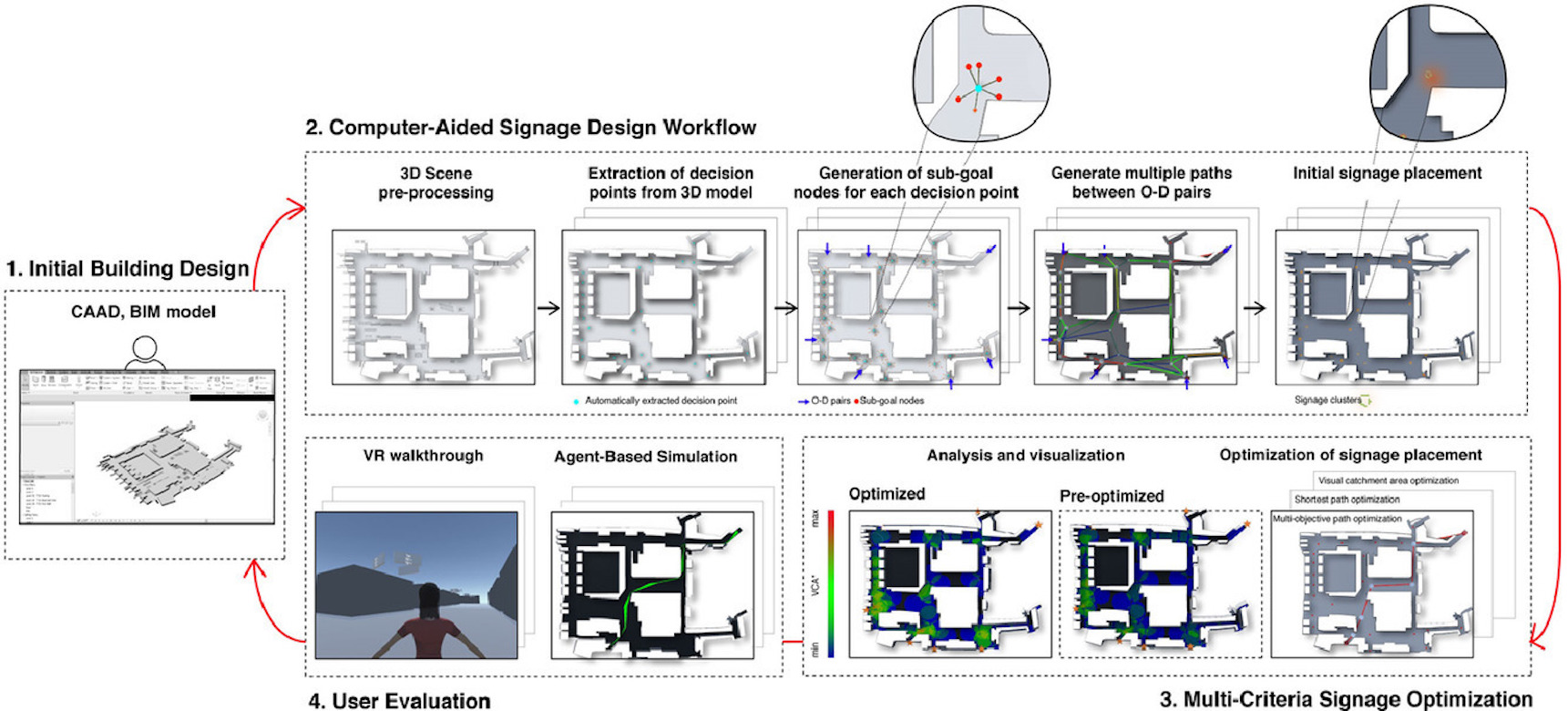Designing signage systems more efficiently
How can we design signage systems in complex buildings more efficiently? Rohit K. Dubey and co-authors developed the design tool, AUTOSIGN and published their work in Computer & Graphics .

Developing a signage system in a complex building is no easy feat, considering the diverse competing objectives and constraints of a mixed-use facility. To improve the efficiency and effectiveness of the process of designing signage systems in buildings, Rohit K. Dubey and co-authors have developed Autosign, a human wayfinding-based signage design tool.
The interactive design tool involves users in designing and optimising signage systems in mixed-use and complex environments such as shopping malls and transportation facilities. The automated approach uses raw 3D building geometry as a basis to estimate the wayfinding complexity of an environment. The wayfinding performance is further evaluated through simulating facility users, virtual reality (VR) walkthroughs by experts, and a system usability study.
With Autosign, the optimised layout of signs could improve the effectiveness of wayfinding signage. Specifically, the area within which a user can read the signs increases by 18% on average.
Their work external page"AUTOSIGN: A multi-criteria optimization approach to computer aided design of signage layouts in complex buildings"call_made is published in the journal Computers & Graphics,in 2020.
